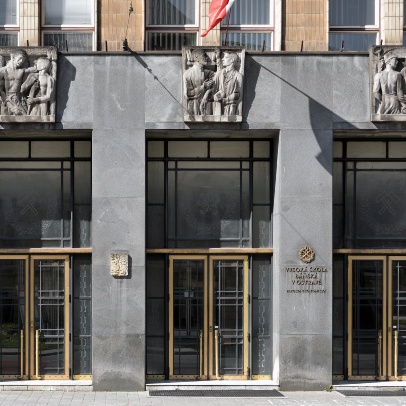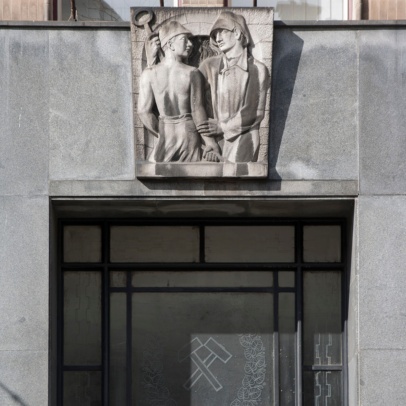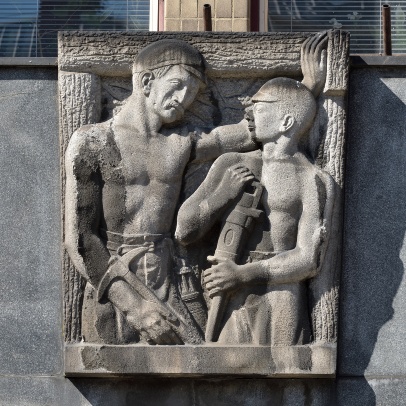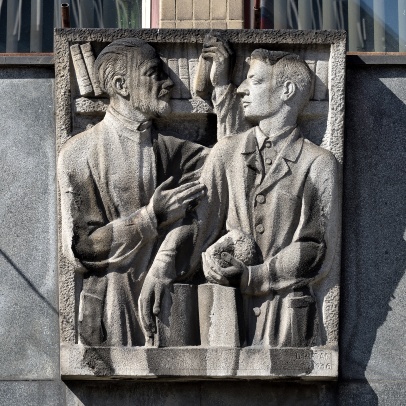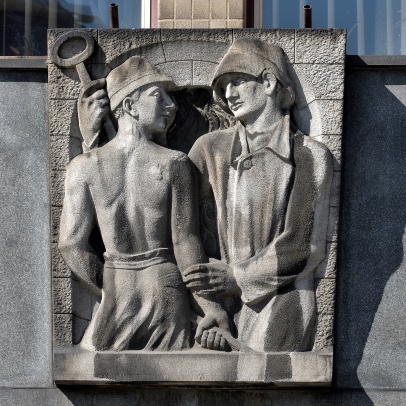Name: Transfer of Experience
Author: Damjan/Damian Pešan
Dating: 1956
Location: on the door head of the main entrance to the Faculty of Economics, VŠB-TUO at Sokolská Street 2416/33 in Moravian Ostrava
Execution: three sandstone reliefs, 120 x 90 cm, the central panel marked PEŠAN 1956 in the lower right corner of the frame
TEACHER AND STUDENT OR THE DIDACTICS AS A RELIEF
Damjan/Damian Pešan seems to be an artist oriented towards woodcarving, church themes and associated primarily with the prominent First Republic architect Jože Plečnik. That is why it is quite remarkable – and perhaps slightly mysterious – how he managed to receive the sculptural contracts in Ostrava, or more precisely in Poruba. There, in 1956, he created a group of four statues of children, young pioneers, on a portico ledge of a block of flats.
In the same year, Pešan completed reliefs on the front facade of today’s Faculty of Economics in Sokolská Street in the centre of Moravian Ostrava. Each of the three stone panels captures a couple of half-figures, of which the elder one always represents a professional experience, and the other a student who is being educated – first in the field of mining, then geology, and finally metallurgy. The three-dimensional images transition from low to high relief, and in the contour are identically formatted as large voussoirs located on the massive door head above the front entrance to the vestibule of the building. It is noticeable that this time, the author worked with stone similar to the way he did with carving before, even though the themes of all three reliefs are purely civilian with regard to their location. Though in the spirit of traditional Ostrava iconography, they go against the descriptive schemes of that time through the method of their creation. The sculptor carved each figure to extend beyond the frame, almost monumentally, without any miniature modelling and schematic gestures, as ordered by the ideology of that period. Thus, his work is much closer to the First Republic tradition of the monumentalized figures of the miners and smelters from the repertoire of the work of the Ostrava sculptor Augustin Handzel, or the sculptor Josef Kubíček from Brno, who was temporarily based in Ostrava, rather than to the sculptural representatives of the work in the so-called Socialist Realism style. After all, Pešan is locally close to the sculptural work at the administrative palaces of Ostrava from the 1920s a 1930s.
